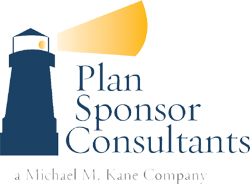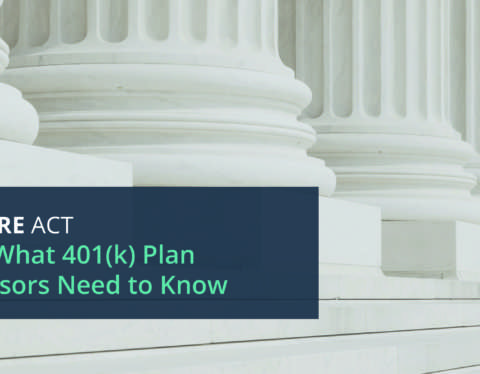Retirement plans aren’t free. As a business owner, it’s easy to understand, but what are the real costs? What are we paying for and why? These are great questions and exactly what we are going to answer. There are a lot of questions about soft costs, hard billables, revenue sharing agreements, and more. Let’s breakdown each cost sector and examine what it is and why it is important for your company’s retirement plan.
Investment Costs
The largest retirement plan cost is most likely the cost of the plan investments themselves. These are the mutual fund vehicles that you and your employees invest in to save for your retirement future. Mutual funds come in a variety of share classes. Each share class has a listed investment expense ratio, which includes investment management costs, 12b-1 fees, and Sub-TA costs. The combination of these three components create the investment expense ratio.
The size of your plan assets might determine which investments your plan has access to. The platform through which your plan is offered might also affect which investments you can access. To better understand both the list of available share classes and investments, ask your relationship manager for a list. They should easily be able to supply this information. Also, if your plan has grown, ask if there are less expensive mutual fund share classes available for your plan. A quick email will help to uncover this information and possibly reduce your plan costs.
One other note, investments costs are typically soft costs. This means that they come out of the plan participant accounts. They are not a hard dollar billable. Rather, for each transaction period a small percentage is taken out to cover the costs of investing management. Thus, even though these costs are out of sight, don’t let them be out of mind.
Recordkeeper Costs
Who is my recordkeeper? Many plan sponsors are familiar with the terms provider, vendor, platform, and these are all words that describe your recordkeeper. They are the company to which you would upload payroll contributions, log into your plan portal account, and/or check your own retirement plan account balance. Your recordkeeper charges you for keeping track of your company’s retirement plan records. Yes, it really is that transparent. They make sure that all the accounts are accurate and that the monies that are pre-tax, Roth, rollovers, et al, are all accounted for and accurately separated.
For record keeping services, there is a cost. It generally comes in two forms, soft dollar and hard billable. Your plan might have what is called a “wrap charge.” It’s a percentage that all accounts are charged in addition to the investment costs and it pays for all of the recordkeeping services. Also, as the plan sponsor, you may pay an annual bill that includes these services.
Some plan sponsors prefer to delegate all of the recordkeeping services and pay a quarterly cost. This way, the participants are not paying for the cost and more money is kept in their accounts for retirement plan account growth. The cost of this service can come from an ERISA Expense Account and/or ERISA Bucket. Also, the costs could come from the forfeitures account. Depending on the size of your plan, there are a few options to pay for recordkeeping services.
Keep in mind that recordkeeping services have come down significantly in recent years and at the same time, the services offered by recordkeepers have expanded considerably. Take this as an opportunity to ask your recordkeeper, what are my total costs (soft dollar and hard billable)? Then work with advisors like us to help you benchmark your costs and services compared to other plans of a similar size. For the same (or less) cost, your plan could receive better customer service, industry updates, online account websites, easier to read quarterly statements, and more features to better organize your plan, while working to educate and inform your employees and help them to become retirement ready.
Advisor Costs
Today 75% of plans use a retirement plan advisor.[1] The two most common reasons are for investment analysis review and issues about fiduciary duties. While these are two very important reasons, working with an advisor can also help with cost benchmarking, retirement readiness, and knowledgeable advice.
Some key areas where a retirement plan advisor can be extremely valuable is to reduce your fiduciary liability exposure and work to increase your employee’s retirement readiness. Other areas of services could include:
- Best Practices for Improving Plan Performance
- Proactively Consulting on Plan Design
- Assistance in Managing Fiduciary Responsibilities
- Monitoring Investment Options
- Minimizing Costs
- Providing Regulatory Updates
A great advisor can genuinely effect your retirement plan’s success metrics.
Retirement plan advisors are paid for their services either through plan assets (fees) or directly from the plan sponsor (hard dollar). When it comes to advisor costs, ask about them. In 2012, the Department of Labor passed regulation 408(b)2, which requires plan sponsors to know and benchmark plan costs for reasonableness. Also, every year, you will receive a statement from “covered service providers” that show charges for plan expenses. Your advisor is one of them. Find out if their costs, services, and value are aligned with your expectations. If you haven’t seen or heard from your advisor in a few years, chances are you are still paying them; the question is, for what? Request a list of services and frequency of deliverability to confirm that your expenses are covering plan services that are important to you and helping your employees.
TPA Costs
A Third Party Administrator (TPA) is like a CPA for your company’s retirement plan. They will look at your company census, cash flow, and plan objectives to provide a plan design illustration that fits your business and plan goals. Working with a quality TPA is a great way for employers seeking to leverage, retain and recruit top employee talent. Most TPAs bill their clients annually for filing the Form 5500 and executing other administrative filing reports.
Plan Auditor
If your company’s retirement plan has over 100 participants, each year you need to complete a plan audit. These can be time consuming and expensive. Plus, the rules surrounding plan audits have recently changed. Auditing charges are usually a hard billable and range in cost. They generally start around $7,000 and go up from there.[2] If your plan is hovering around 100 participants, it might be time to think about forcing eligible participants out of the plan through an Automatic Rollover Safe Harbor. This could reduce administrative headaches for your support team, as well as save you from enduring the over 100 large plan audit.
We hope that during this article, we have covered the basics of retirement plan costs. Offering a company-sponsored retirement plan is an incredible tool for employers to attract and retain top employee talent. It is also a great vehicle for the business owner to strategically plan for his or her own retirement. However, as we have described, retirement plans aren’t free. The important takeaway is understanding how much you are paying, for what, and why.
For help with cost benchmarking and fee analysis, please connect with us and we will gladly review your plan information and provide a barometer, so that you can review your costs in a transparent and informed way.
[1] Retirement Advisor Council
[2] http://www.summitcpa.net/401k-audit-pricing



